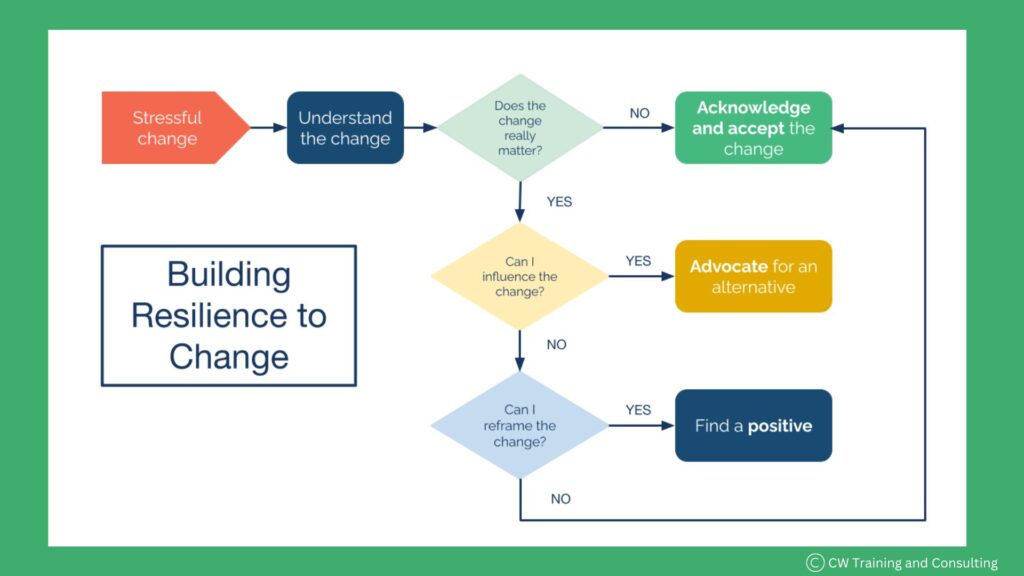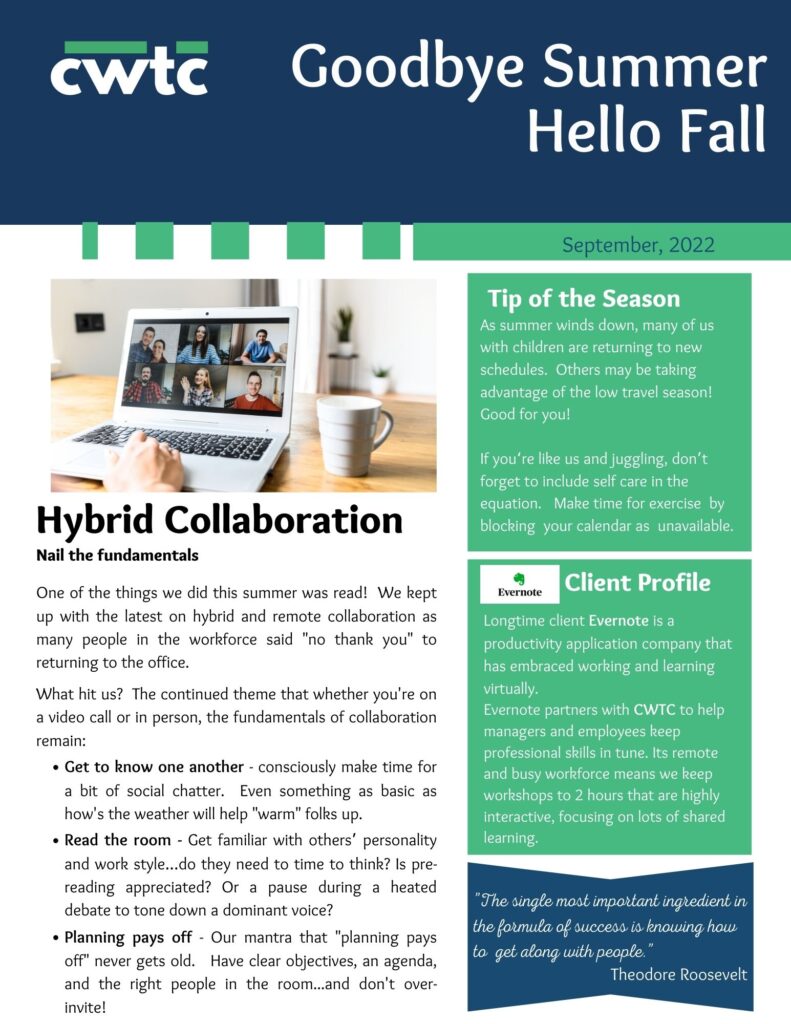Silicon Valley is famous for its boom-and-bust cycles, and it sure seems like we’re in a bust phase right now. If you’re not actively managing a layoff, you’re likely leading people who are worrying about one or helping someone deal with one.
We’ve been through a few of these cycles ourselves and know how challenging it can be to lead stressed and distracted teams. Read on for some professional skills development ideas from our popular workshop “Finding Resilience in the Face of Change” to help your team navigate during this difficult time.

A Model for Navigating Change
We like frameworks and we’re process people, so we put together this flowchart to describe a path through the uncertainty that comes with change.
When a stressful change comes along, we always recommend helping your team understand what’s happening and why. Understanding the change lays the groundwork for them to manage their responses in a more positive and less stressful manner.
In the context of a layoff, it clearly matters and is not subject to influence by your team. Therefore, we’d like to focus on: 1) reframing the experience to find some positives and 2) acknowledging and accepting the new reality.
How do you reframe a layoff?
Is it possible to see a different perspective that highlights some benefit or positive outcome in a layoff? That’s a tall order.
But let’s say that your org didn’t directly lose headcount due to the layoff, but reductions elsewhere in the company impacted their responsibilities and project assignments.
- Celebrate the successes before turning to new activities and challenges. This helps them step back and remember what they’re capable of.
- Identify new skills and experiences they’ll have in their new assignments. Maybe they’ll have a chance to work with a new tool or technology, learning a valuable new skill. Or perhaps they’ll expand their networks and resources by working with new people.
This isn’t about trying to sugarcoat the situation. It’s looking for the big picture that enables you and your team to keep perspective and turn an unwelcome change into something that, if not positive, is at least neutral.
What does it look like to acknowledge and move forward?
Reframing only goes so far. A layoff is a big deal. Everyone will likely experience shock and loss.
- Acknowledge exactly how things will be different. What have you and your team lost? Guide them through those losses through private and group discussions. Allow yourself and your team the space to experience whatever emotions come up. Consider creating a non-work-related activity that gives the team a chance to productively express themselves.
- Explore worst-case scenarios and do some contingency planning. One group of project managers we recently worked with was able to put some of their distraction and worry aside when they realized the most likely outcomes wouldn’t be all bad.
- Help your team move forward. When you model “It is what it is” and focus on making the best of the current situation, your team often will follow. For example, if a systems project was discontinued because of the layoff, you may have to improve existing processes without the planned technology. Focus on making those process improvements the best they can be to move the team forward.
Change is indeed constant and inevitable—especially in tech. Helping others understand the change and focus on what’s next can go a long way toward bouncing back.
We want your thoughts! Do you have specific examples where you’ve helped your team navigate an unwanted change? Share your story below!




